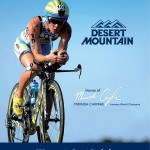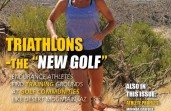By Mark Edmunds
Mark Edmunds, Fairfax County Masters/TeamZ Coach assists adult swimmers and triathletes to improve their swimming skills; ability ranges from Kona qualifiers to first-time swimmers, provides his top swim advice for success in open water swimming.
OPEN WATER SWIMMING PHILOSOPHY
Appreciate the fact that you have the tremendous opportunity to swim in open water—enjoy every occasion; value every moment.
Safety is a priority; live to swim another day.
- Never swim alone; swim either with a ‘swim buddy’ that is your same speed or with a group of swimmers.
- Swim with an escort; have someone follow you in a kayak, paddleboard, etc. (Having an escort is ideal for refueling and hydration.)Be prepared.• Environmental Situations.
–Tides, currents, water temperature, and weather can all be checked prior to an open water swim.
–Use websites to determine what impact the tides and current will have during the time of your swim.
–Know the type of open water where you will be swimming. Various types of water (small lake, large lake, ocean, cove, channel) have different factors that will impact your swim, such as tides, currents, water temperature, wind, marine life, and boat traffic.
• Marine life.
–If you feel something on your toe, first think “plant life” before you think “shark.”
–Do not panic if you come into contact with fish, jellyfish, or plant life; you are swimming in ‘their’ house.
• Know your warning signs. –Hypothermia.
? Mild: goose bumps and shivering; skin color is blue.
? Moderate: eyes are dilated, shivering is more severe, difficulty speaking, trouble answering questions, skin color is gray.
? Severe: may be unconscious, coordination is severely impaired, confusion is coupled with incoherence and irrationality, shivering ceases.–Dehydration.
? Dizziness, fatigue, headache, thirst, loss of appetite, impatience, flushed skin.–Fatigue.
? Some days are just not your day; know when to stop and have a plan to get to shore safely.
• Protect yourself from sunburn.
• Swimming on a Marked Course.
–Know how many buoys are on the course.
–Know the distance between buoys.
–Know what direction you will be swimming and what side the buoys will be on as you pass.
–Identify any sighting helpers: large trees, different color roofs, antenna towers, etc.
• Have a Goal/Purpose.
–Establish a training plan to reach your Goal.
- ? Tailor your training plan based on the distance, type of event, expected conditions, etc.
- ? Know you will not meet your Goal in one practice; take your training one practice at a time.
? Maintain a log of your training plan and your results; review to find ways to improve or adjust.
• Train your mind—much of open water swimming is mental.
–Just like on a cool morning at the pool, the first 100 yards of an open water swim is the hardest—“It is cold, why am I doing this, was that a jellyfish,” etc. Get over it and move on.
–Maintain a positive attitude; keep negative thoughts from creeping into your head.
–Relax—concentrate on your form.
–Have confidence in what you are doing and in your preparation.
–Each open water is different; be prepared if new challenges arise.
• Pools provide ideal conditions for practice.
–Use practice at the pool to establish your ideal stroke.
–Build your endurance foundation.
–Use interval sets—swim fast to get faster.
–Take the hard work you do in the pool to the open water.
• Use video to analyze your stroke.
–Use gadgets; GoPro hi def cameras, iPhones and iPads (with a waterproof case) can capture video above and under water.
–Stop-motion allows you to break down underwater video, detailing your stroke frame by frame. Identify what areas of your stroke you need to improve.
Have fun!
FOR MORE INFORMATION VISIT:
http://www.triteamz.com and http://www.optimalswimming.com












